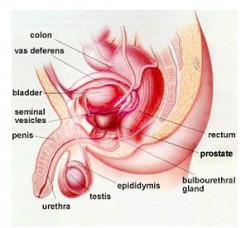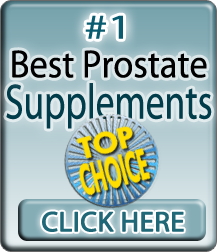Enlarged Prostate
Enlarged prostate is a fact of life for older American men over the age of 50.
 Inflammation of the prostate gland or prostatitis, or benign prostatic hyperplasia (BPH) all refer to the same basic condition. This article provides an enlarged prostate overview of some important areas. What is crucial for you to know as you gather information on this common condition, for yourself or to help a loved one is that this is a medical condition which is not yet fully understood by the international medical community. This article will share information about the types of prostate enlargement which can help review what your medical doctor has provided already; or, it will help you prepare areas for exploration with your doctor in your next consultation. From this point in your research, you should be following through on other major topical areas within the subject of prostate enlargement including:
Inflammation of the prostate gland or prostatitis, or benign prostatic hyperplasia (BPH) all refer to the same basic condition. This article provides an enlarged prostate overview of some important areas. What is crucial for you to know as you gather information on this common condition, for yourself or to help a loved one is that this is a medical condition which is not yet fully understood by the international medical community. This article will share information about the types of prostate enlargement which can help review what your medical doctor has provided already; or, it will help you prepare areas for exploration with your doctor in your next consultation. From this point in your research, you should be following through on other major topical areas within the subject of prostate enlargement including:
- Causes of Prostate Enlargement
- Tests and Diagnosis of Prostate Enlargement
- Prostate Enlargement Symptoms
- Treatment for Enlarged Prostate
- Lifestyle Changes for Enlarged Prostate
- Enlarged Prostate Surgery
- Home Remedies for Enlarged Prostate
- Diet for Enlarged Prostate
- Complications of an Enlarged Prostate
Prostate Inflammation. The medical term for a prostate enlarged by inflammation is “prostatitis.” There are three varieties of prostate inflammation:
- Acute
- Chronic
- Non-infectious
Acute Inflammation of the Prostate Gland. This is an infectious variety of the disorder that has bacteria or a virus as its cause. Symptoms appear seemingly out of nowhere; these are often severe. Fluish symptoms include aching lower back with severe hot and cold spells of fever followed by chilling. The urinary tract is affected adversely. Marked symptoms include pain when urinating, low pressure urinary streams, and incomplete bladder discharging where urine is retained.
Chronic Inflammation of the Prostate Gland. Another infectious variety of prostate enlargement, this variety has bacterial causes. Emotional stress, excessive caffeinating, smoking, and alcohol consumption heightens the severity of symptoms and aggravates glandular tissue and destabilizes the urinary tract. Recurring bladder infections are common with this variety of prostate enlargement. Over active urination patterns with lower back and abdominal pains are common primary symptoms as well.
Non-Infectious Inflammation of the Prostate Gland. Causes of this variety are non-bacterial. Courses of antibiotic treatments are ineffective against it. However, this happens to be the most common type of prostate inflammation. This form of prostatitis is aggravated by emotional stress and inconsistent sexual activity, i.e. full-on ejaculate orgasm. Tension in the pelvic muscles may tighten so severely as to cause pain. The inflammation will crimp or restrict the urethra passing through the gland itself and cause pressure during bladder emptying. Pressure and restriction causes back up and back flow of urine into the bladder ducts where there is an adverse chemical reaction with bladder tissue, and the inflammation occurs. Unsecreted seminal ejaculate can aggravate the condition further by clogging ductwork used by the prostate to co-create seminal fluids.
None of these conditions just described are sexually transmittable diseases. The systems of prostate inflammation resemble the symptoms for benign prostatic hyperplasia. There is also a condition affecting urethral tissue that is an inflammation known as urethritis. Due to the similarities, it is highly recommended that symptom sufferers get medical attention as soon as possible to determine which condition is taking hold. Testing is required in order for the doctor to prescribe an effective course of treatment.
